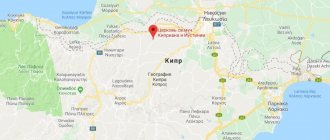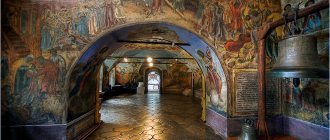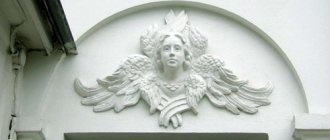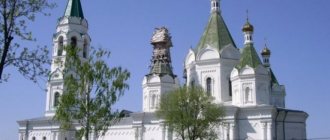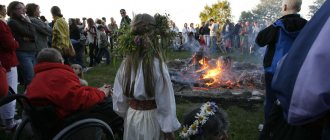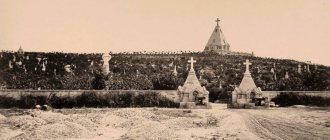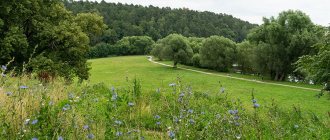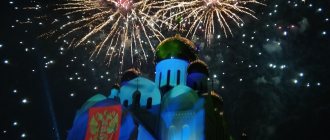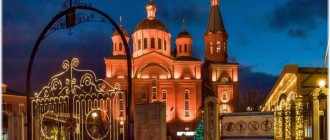Mir
Russia Voronezh region Voronezh Assumption Admiralty Church (Voronezh) Map is loading…
{"format":"leaflet","minzoom":false,"maxzoom":false,"limit":50,"offset":0,"link":"all","sort":[""], "order":[],"headers":"show","mainlabel":"","intro":"","outro":"","searchlabel":"\u2026 \u0441\u043b\u0435\ u0434\u0443\u044e\u0449\u0438\u0435 \u0440\u0435\u0437\u0443\u043b\u044c\u0442\u0430\u0442\u044b","default":"","import-annotation":false,"width ":"auto","height":"350px","centre":{"text":"","title":"""link":"""lat":51.65661109999999922592905932106077671051025390625,"lon": 39.214366699999999354986357502639293670654296875,"icon":""},"title":"","label":"","icon":"","lines":[],"polygons":[],"circles":[ ],"rectangles":[],"copycoords":false,"static":false,"zoom":8,"defzoom":14,"layers":["OpenStreetMap"],"image layers":[] ,"overlays":[],"resizable":false,"fullscreen":true,"scrollwheelzoom":true,"cluster":false,"clustermaxzoom":9,"clusterzoomonclick":true,"clustermaxradius":80, "clusterspiderfy":true,"geojson":"","clicktarget":"","showtitle":true,"hidenamespace":false,"template":"","userparam":"","activeicon": "","pagelabel":false,"ajaxcoordproperty":"","ajaxquery":"","locations":[{"text":"\u003Cb\u003E\u003Ca href=\"/palomnik/%D0% A3%D1%81%D0%BF%D0%B5%D0%BD%D1%81%D0%BA%D0%B8%D0%B9_%D0%90%D0%B4%D0%BC%D0%B8% D1%80%D0%B0%D0%BB%D1%82%D0%B5%D0%B9%D1%81%D0%BA%D0%B8%D0%B9_%D1%85%D1%80%D0% B0%D0%BC_(%D0%92%D0%BE%D1%80%D0%BE%D0%BD%D0%B5%D0%B6)\» title=\»\u0423\u0441\u043f\u0435\ u043d\u0441\u043a\u0438\u0439 \u0410\u0434\u043c\u0438\u0440\u0430\u043b\u0442\u0435\u0439\u0441\u043a\u0438\u0439 \u0445\u0 440\u0430\u043c (\u0412\u043e \u0440\u043e\u043d\u0435\u0436)\»\u003E\u0423\u0441\u043f\u0435\u043d\u0441\u043a\u0438\u0439 \u0410\u0434\u043c\u0438\u044 0\u0430\u043b\u0442\ u0435\u0439\u0441\u043a\u0438\u0439 \u0445\u0440\u0430\u043c (\u0412\u043e\u0440\u043e\u043d\u0435\u0436)\u003C/a\u003E\u003C /b\u003E\u003Chr/ \u003E\u003Ca href=\»/palomnik/%D0%A1%D0%B2%D0%BE%D0%B9%D1%81%D1%82%D0%B2%D0%BE:%D0%90%D0 %BD%D0%BD%D0%BE%D1%82%D0%B0%D1%86%D0%B8%D1%8F\" title=\"\u0421\u0432\u043e\u0439\u0441\u0442\u0432 \u043e:\u0410\u043d\u043d\u043e\u0442\u0430\u0446\u0438\u044f\»\u003E\u0410\u043d\u043d\u043e\u0442\u0430\u0446\u0438\u044f \u003C/a\u003E: »'\u0423\u0441\u043f\u0435\u0301\u043d\u0441\u043a\u0438\u0439 (\u0410\u0434\u043c\u0438\u0440\u0430\u043b\u0442\u0435\u0301 \u0439\u0441\u043a\ u0438\u0439) \u0445\u0440\u0430\u0301\u043c"' \u2014 \u0441\u0442\u0430\u0440\u0435\u0439\u0448\u0430\u044f \u0441\u043e\u04 45\u0440\u0430\u043d\u0438 \u0432\u0448\u0430\u044f\u0441\u044f \u0446\u0435\u0440\u043a\u043e\u0432\u044c \u0412\u043e\u0440\u043e\u043d\u0435\u0436\ u0430. \u0423\u0441\u043f\u0435\u043d\u0441\u043a\u0438\u0439 (\u0410\u0434\u043c\u0438\u0440\u0430\u043b\u0442\u0435\u0439\u0441\u 043a\u0438\u0439)\u0445 \u0440\u0430\u043c \u044f\u0432\u043b\u044f\u0435\u0442\u0441\u044f \u043f\u0430\u043c\u044f\u0442\u043d\u0438\u043a\u043e\ u043c\u0430\u0440\u0445\u0438 \u0442\u0435\u043a\u0442\u0443\u0440\u044b XVII \u0432\u0435\u043a\u0430. \u041e\u043d \u043f\u0435\u0440\u0435\u0441\u0442\u0440\u0430\u0438\u0432\u0430\u043b\u0441\u044f \u0438 \u0438\u0437\u043c \u0435\u043d\u044f\u043b\u0441 \u044f \u043d\u0435\u0441\u043a\u043e\u043b\u044c\u043a\u043e \u0440\u0430\u0437, \u043f\u043e\u044d\u0442\u043e\u043c\u044 3\u0432\u0430\u0440\u0445\ u0438\u0442\u0435\u043a\u0442\u0443\u0440\u0435 \u0435\u0433\u043e \u0441\u043c\u0435\u0448\u0430\u043b\u0438\u0441\u044c \u 0440\u0430\u0437\u043d\u044b\ u0435 \u0441\u0442\u0438\u043b\u0438.","title":"\u0423\u0441\u043f\u0435\u043d\u0441\u043a\u0438\u0439 \u0410\u0434\u043c\u0438\u 0440\u0430\ u043b\u0442\u0435\u0439\u0441\u043a\u0438\u0439 \u0445\u0440\u0430\u043c (\u0412\u043e\u0440\u043e\u043d\u0435\u0436)","link":""" lat ":51.65661109999999922592905932106077671051025390625,"lon":39.214366699999999354986357502639293670654296875,"icon":""}],"imageLayers": []}
51.656557; 39.214364
Russia, Voronezh, Sofia Perovskaya street, 9
Voronezh, Voronezh region 394035
Russia
Telephone:
+7-952-540-94-92
Uspensky Admiralty temple
- the oldest surviving church in Voronezh. The Assumption (Admiralty) Church is an architectural monument of the 17th century. It was rebuilt and changed several times, so its architecture mixed different styles.
History[edit]
The Assumption Church is one of the oldest and most famous in the city of Voronezh; its full name is the Dormition of the Most Holy Theotokos and Ever-Virgin Mary. The first mention of the church, then still a wooden building, dates back to 1594. Around 1600, with the “installation” of Tsar Boris Godunov, the Assumption Monastery arose around the temple. Its founder is Abbot Kirill. In 1616, in the Assumption Church there was a chapel of Theodore Stratilates. The wooden temple suffered from the spring flood of the Voronezh River, so at the end of the 17th century, Abbot Titus intended to build a stone five-domed temple that could accommodate up to 500 people. Probably at that time the Church of the Assumption was considered the main one in the city. When this construction was completed is a controversial issue for historians. Three dates are suggested: 1694, 1699 and 1703. But in any case, the Assumption Church is the second stone building in the history of Voronezh - after the bell tower of the Alexievo-Akatov Monastery.
When shipbuilding began in Voronezh under Peter I, a German settlement quickly grew up near the Assumption Monastery, and an admiralty was erected on the island, which included a citadel (fortress), a stone workshop, and a “sailing yard.” The Tsar's palace and the houses of his associates were built nearby: A. Menshikov, F. Apraksin, F. Golovin, N. Zotov. There is a shipyard on both sides of the monastery. The monastery, which found itself in the center of events, and being a hindrance to the shipyard, was abolished by Peter I and moved. Only the Assumption Church remained, which turned into the Admiralty Church and became the site of ceremonies during the launching of sailing ships. Tsar Peter himself often attended the services and, according to legend, even sang in the choir. The first ship-galley "Principium" was launched on April 2, 1696, and on the morning of May 3, 1696, the ships lined up along the river bank (from modern Chernyshevsky Street to the VOGRES bridge), awaiting a signal from the tsar and commander-in-chief to go to Azov. A solemn service took place in the Assumption Church, which was conducted by Saint Mitrofan, the first bishop of Voronezh in the presence of Emperor Peter I. To the ringing of bells, Bishop Mitrofan escorted the king to the ship "Principium", blessed him for feats of arms and wished him to return with victory. The ringing of bells was heard from the Assumption Church until all the ships left the Chizhovskaya Sloboda area.
In April 1700, Peter I launched the 58-gun ship “God's Foresight”, also known as “Goto Predestination”. Princess Natalya and Tsarevich Alexei arrived from Moscow. In honor of their safe arrival, a solemn service was held in the presence of the Tsar in the Assumption Church, which was performed by Saint Mitrofan. The same celebration took place during the launching of the ships in 1703. Thus, the Assumption Church is a monument associated with the history of shipbuilding in Russia.
In 1711, the construction of ships ceased; the royal buildings quickly fell into disrepair and were destroyed in a fire in 1748. But the Church of the Assumption was preserved and became a parish church.
In 1803, a three-tiered stone bell tower and a refectory with two chapels were built: the Epiphany and St. Anthony and Theodosius of Pechersk. The temple kept many military awards of Voronezh residents - participants in the Patriotic War of 1812, the sword of Vice Admiral A.N. Senyavin, commander of the Azov military flotilla, since 1844 - the battle banners of the Voronezh Grenadier and Jaeger regiments.
In 1880–1881, the church underwent alterations: the windows were enlarged, the porch at the northern entrance was demolished, a stone fence was built on the river side instead of an earthen rampart, a guardhouse was added to the bell tower, and the iconostasis of the church was rewritten. In 1894, an almshouse with a literacy school for girls appeared. Throughout its history, the Assumption Admiralty Church has been repaired several times.
After the revolution, the temple was at one time a cathedral. Archbishop Zacharias (Lobov) moved his see here in 1932 (canonized in the host of new martyrs and confessors of Russia on August 13-16, 2000). However, the clergy of the temple went into a renovationist schism and accused Archbishop Zacharias and then Archbishop Peter (Sokolov) of anti-Soviet agitation, who were arrested and repressed.
In February 1940, the temple was closed. The building was transferred first to the Osoaviakhim City Council, in 1946 to the regional archive, and in 1969 to the local history museum for an exhibition on the history of the navy. The construction of a reservoir in 1972 threatened the complete destruction of the temple. Only the celebration of the 300th anniversary of the Russian Navy prompted the state to allocate funds for the restoration of the church.
On September 14, 1996, the temple was consecrated.
On September 21 of the same year, in the presence of the command of the Russian Navy, the great consecration of the naval flag of the Russian Federation took place. On May 8, 2002, a memorial plaque was consecrated and installed in memory of the Voronezh submariners who died on the Komsomolets and Kursk nuclear submarines. The naval St. Andrew's flag was transferred to the temple for safekeeping. On the island opposite the temple on June 12, 2002, a wooden cross was erected in memory of the 330th anniversary of the birth of Emperor Peter I.
Restoration work continues in the temple under the patronage of Metropolitan Sergius of Voronezh and Borisoglebsk.
Among the previous rectors of the temple were Archpriest Afinogen Pechersky (mentioned in 1805), Priest Theodore Lukin (mentioned in 1911), Archpriest Vladimir Uryvaev (1996–1999), Archpriest Petr Petrov (1999–2002), Priest Konstantin Grishin ( 2002–2004), priest Viktor Zubkov (2004–2007), priest Artemy Azovsky (2007-2016). Currently, the rector of the church is Archpriest Victor Minor (since 04/01/2016).
The Assumption Admiralty Church is an architectural monument. Built at the turn of the 17th–18th centuries, the temple was rebuilt and repaired several times. There was a mixture of architectural styles. The building consists of parts from different periods. The oldest part - a five-domed high temple with a low three-lobed apse - was built in the forms of ancient Russian architecture. The rectangular refectory and three-tier bell tower belong to classicism. The paintings are covered with modern plaster. The height of the temple is 13.1 m, the bell tower is 21.4 m. The land plot of the temple is 0.142 hectares.
In 1994–1996, restoration work was carried out according to the design of architect T.M. Sinegub and Moscow Institute of Foundations and Foundations named after. Gersivanov. In 2006, work was resumed on further waterproofing the foundation of the temple.
The foundation stone of the Church of the Assumption was completed in the first decade of the founding of the Voronezh fortress
According to the supposed version, the foundation of the temple took place in the first decade of the founding of the Voronezh fortress. The letter, which was sent by Tsar Fyodor Ivanovich on August 5, 1594, to governor Ivan Kobyakov, spoke of the departure of the builder Alexander to Voronezh.
This builder was bringing icons, bells, and liturgical books to the Church of the Assumption, which were purchased specifically for Voronezh.
Tsar Fyodor Ivanovich wrote a letter in which it was written about the departure of the builder, who would later build the Assumption Church in Voronezh
This very letter also stated that as soon as the builder brought icons and bells, a monastery should be ordered to be built. Many historians believe that the Assumption Church existed as a parish church, without a monastery. The Assumption Monastery itself was built around 1600 by decree of Tsar Boris Godunov himself. This monastery was included in the Assumption Church.
The founder of the monastery is Abbot Kirill. All the buildings of that time were wooden, like the monastery itself. The temple was located on the bank of a river, so it was often flooded with hollow water, which is why the wooden planks quickly rotted.
In 1616, there was severe flooding, and it was decided to move the temple to the old Kazar settlement. But after such severe flooding there was no more, so the temple was left in its original place. This fact is confirmed by an entry in the census book of 1678.
On June 29, 1680, a fire occurred in the Assumption Church, which subsequently spread to nearby buildings. After a night fire, about 80 residential buildings and all previously built monastery buildings burned down. A record of this event has been preserved in the central archive of ancient acts.
Current state[edit]
Today, the Assumption Admiralty Church is one of the most beautiful and majestic in Voronezh. People come here from all over Russia to touch the shrine, smell the history, and find peace and quiet in prayer.
The church has a catechist group, a Sunday school, and a Cossack spiritual and educational center. The temple provides care for students of secondary school No. 74, Cossacks of the Voronezh City Cossack Society, as well as military personnel of military unit 23326 (7000th air base).
After the fire, Abbot Titus decided to rebuild the temple in stone.
After the abbot of the monastery, Titus decided to rebuild the wooden church into a stone one. They planned to build a five-domed temple in the shape of a tetrahedral pillar, which was designed for almost 500 people. They also planned to build a low, single-tier bell tower, which was supposed to be adjacent to the temple part. The refectory was not planned at all.
Archimandrite Dmitry Sambykin wrote that this particular church became one of the main ones in all of Voronezh at the end of the 17th century. They said this only because they planned to build the temple with five domes, and in the old days this was a sign of the main cathedral in the city.
There are also real dates for the consecration of the stone temple. E. A. Bolkhovitinov and Archimandrite Dimitri confidently claim that the consecration of the temple took place on December 27, 1699. But the priest of the temple and Fyodor Lukin, the author of the essays, believed that this happened on December 27, 1694. The official date of the consecration of the temple was December 27, 1694.
But in fact, both dates contradict the documents. In the fall of 1694, a drawing of the monk was drawn up, which was then sent to Moscow in January 1695. The drawing was found after a long time in one of the Moscow archives.
The drawing showed a three-domed wooden church. The drawing also included the river channels that existed at that time, and a monastery village on the left bank. The wooden fortress and the Church of the Assumption itself were also drawn.
The drawing was personally certified by Abbot Titus. Of course, the drawing does not contradict the date of consecration of the temple itself, but in the engraving of the Dutch traveler who visited Voronezh in February 1703, the temple was still drawn as three-domed and wooden.
A drawing of a monk, which indicated that the Assumption Church had only three domes and was wooden
This traveler also speaks in his notes about the stone buildings of the city of Voronezh, but there was no talk at all about the temple, which then should have been made of stone.
The director of the former Voronezh Museum of Local Lore says that the Dutchman, from the place from which he observed, saw only three chapters, but in fact there were five. Others were simply not visible from that angle. It was the director himself, A.P. Solovyov, who argued that the temple was still made of stone.
Many Voronezh researchers were of the opinion that the Assumption Church was rebuilt in stone after 1703. They also noted that at that time the temple was the main temple in Voronezh.
Shrines[edit]
Icon of the holy righteous warrior Theodore Ushakov (with a particle of holy relics)
- Icon of St. Mitrophan of Voronezh, wonderworker
- Icon of the Holy Prophet Elijah
- Miraculous Icon of the Blessed Virgin Mary “Kazan”
- Icon of St. Nicholas, Archbishop of Myra in Lycia, wonderworker
- Icon of the holy righteous warrior Theodore Ushakov (with a particle of holy relics)
- Cypress cross with mother-of-pearl trim from Jerusalem, decorated with flowers from the Garden of Gethsemane
- Icon "Cathedral of the Blessed Virgin Mary"
- Icon of the holy king, prophet and psalmist David
- Icon of Equal-to-the-Apostles Tsar Constantine and his mother Queen Helena
- Icon of the Blessed Virgin Mary “Kazan”
On May 8, 2002, in the Assumption Admiralty Church of the city of Voronezh, a memorial plaque was consecrated and installed in memory of the Voronezh submariners who died on the submarines Komsomolets, Kursk, the battleship Novorossiysk, the cruiser Varyag and the transport Marina Raskova and escort vessels as part of the BD-5 convoy (author - sculptor A.I. Kozhevnikov). On May 22, 2003, the St. Andrew's flag was transferred for storage, next to it is the icon of the holy righteous Theodore Ushakov, admiral of the Russian fleet, with a particle of his holy relics. On the island opposite the Assumption Church on June 12, 2002, a wooden cross was erected in memory of the 330th anniversary of the birth of Peter the Great.
Commemorative plaques of glorious workers for the benefit of Great Russia were made and installed - Emperor Peter I, Admiral General Fyodor Matveevich Apraksin, the first Governor-General of the Voronezh province, the first president of the Admiralty Board and Admiral Cornelius Ivanovich Kruys, vice-president of the Admiralty Board.
Architecture and interior
An attentive traveler will immediately note how two eras are combined in this temple - the pre-Petrine Old Russian (early Moscow) style and Godunov classicism. A high square nave topped with five domes, the refectory and the bell tower are proportional, symmetrical, compact - these are the features of the two named styles.
Since Byzantine four- and six-pillar cross-domed churches were taken as a model for pre-Petrine stone churches, after reconstruction from wood to stone, the Assumption acquired a two-tiered square quadrangle (the main part of the building), crowned with a five-domed dome (the central chapter is larger in size than the blind corner ones). On the eastern side, the apse adjoins the temple building - a structure equal in width to the quadrangle, but much lower than it. The buildings that were built later (bell tower and refectory) are in the style of Godunov classicism.
Admiralty Temple, photo inside
Among the shrines and valuables of the temple, in addition to icons, St. Andrew's flag and memorial plaques (with the names of fallen Voronezh heroes who gave their lives to serve the Fatherland) are revered.
Memorial plaques and St. Andrew's flag
Excursions are regularly organized for parishioners. In 2021, the Orthodox TV channel “Soyuz” prepared an educational program “To the Holy Places. Assumption Church, Voronezh.
Author: Marina Saunina
How to get there[edit]
Address:
Voronezh, st. Sofia Perovskaya, 9 (historical name - Bolshaya Uspenskaya St.) Admiralteyskaya Square
Telephone:
+7-952-540-94-92
Directions:
• from the rest. "Chernavsky Bridge" on the street. Sofia Perovskaya in the direction of Admiralteyskaya Square;
• from the rest. "Vyborgskaya" along Petrovskaya Embankment in the direction of Admiralteyskaya Square
• from the rest. "st. Karl Marx (Teatralnaya)" on the street. Karl Marx in the direction of Admiralteyskaya Square (the shore of the Voronezh Reservoir), you can go down along the street. Dekabristov (gentler descent)
• from the rest. VSU on the street. Taranchenko, then down, towards Admiralteyskaya Square (the shore of the Voronezh Reservoir) along the street. Karl Marx or st. Dekabristov (gentler descent).
Personal impressions
We ended up here on Sunday afternoon. The Assumption Church greeted us with beggars. At the church gates, occupying two-thirds of the passage, two homeless-looking men, not yet old and seemingly healthy, sat right on the paving slabs, with paper cups in front of them. The reason for their being here was clear; empty bottles of twelve-ruble “cosmetic” lotions were lying in disarray on the grass outside. I did not photograph these marginalized people, primarily because I am still not mentally prepared for portrait photography on the street.
A significant part of the church territory (mostly the backyard) is fenced with panel slabs with two rows of barbed wire stretched on top. Apparently, to prevent children from climbing, since adults know how to use a tool, you can hardly stop them with such nonsense. The downside of this “protection” is that the aesthetics of the building suffer and the overall impression of this place noticeably deteriorates.
Most of the fenced space is occupied by an unkempt wasteland with an uneven surface overgrown with weeds. Apparently, the Monastyrschenki cemetery was located in this place. Why the territory has not yet been put in order, we did not begin to guess. Voronezh already has enough unkempt places. Fortunately, every year there are fewer and fewer of them.
The urban space around the temple is gradually being built up with high-rise buildings. Active construction is still underway. It is quite possible that in five to ten years these places will be unrecognizable. Some will have a beautiful view from the window, while others will have no view from the windows at all. But, since the territory of the Assumption Church in one part of its perimeter adjoins Leninsky Prospekt, it will continue to delight citizens with its appearance.
I photographed the tops of the domes and bells close-up. That's when I was able to appreciate the presence of a superzoom in the camera. You can see all the minor flaws in the design of the temple that you don’t notice from afar.
The inside of the church complex is quite cozy and beautiful. Along the sidewalk near the northern side of the temple there are spruce trees that were not included in the frame. Right there is not quite an ordinary well.
The territory of this temple is not for children's fun and entertainment, this is stated on several signs placed in prominent places.
There is also a very picturesque corner here - with a fountain, a bridge and a couple of live gazebos, in one of which my wife and child stayed while I toured the local attractions. On the bench opposite sat a quiet-looking elderly citizen, who some time later was frightened by a noisy group of tourists (domestic, but apparently not from here), who came to take pictures in the green gazebo and near the bridge in different poses.
Among the vegetation, we noticed an interesting specimen - a perennial shrub with bright yellow “gramophone” flowers the size of an adult’s palm. If anyone knows what kind of plant this is, please write in the comments.
